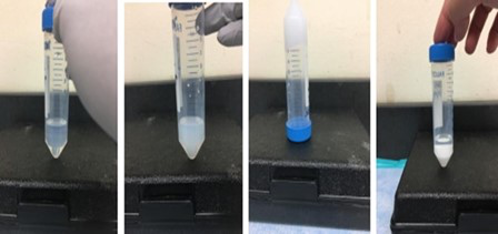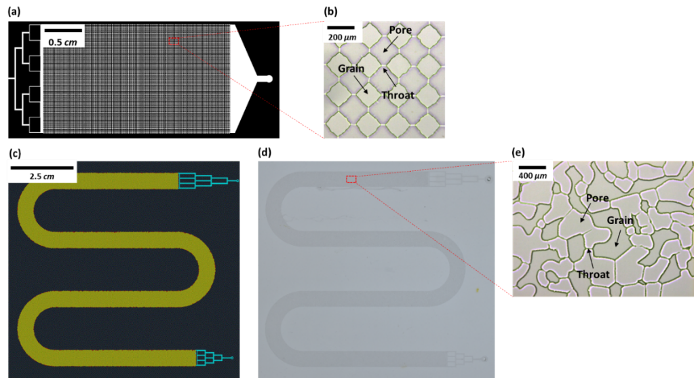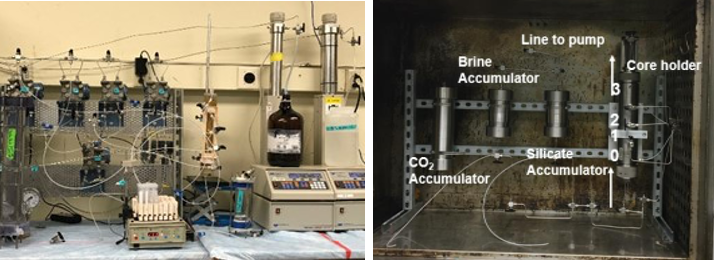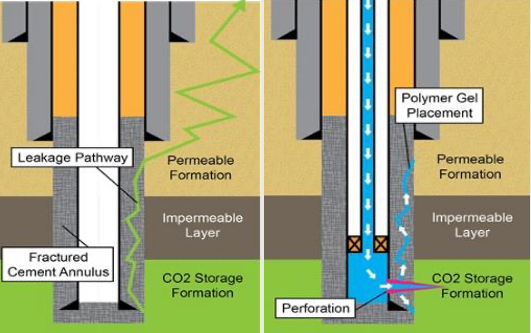Description
The CO2 Capture Project (CCP) “is a group of major energy companies working together to advance the technologies that will underpin the deployment of industrial-scale CO2 capture and storage (CCS) in the oil & gas industry.” https://www.co2captureproject.org/. In collaboration with CCP, we are developing a process that uses a permeability modifier (silica gel and crosslinked polymer) as a conformance control agent and cap rock sealant. We also developed a pH-triggered sealant to prevent leakage in microannuli or cement fractures.
Faculty Supervisors
Matthew Balhoff and David DiCarlo
Major Projects List
We are developing a process that uses a permeability modifier (silica gel and crosslinked polymer) as a conformance control agent and cap rock sealant. Microfluidics and high-pressure, high temperature (HPHT) core flood experiments with CO2 are performed to measure the reactive transport of the modifiers. The results are upscaled in a numerical reservoir simulator is performed to optimize the treatment method for fracture sealing and leakage remediation. The effects of operating conditions, reservoir heterogeneity, and associated uncertainty on the treatment results were investigated by performing sensitivity analysis of the injection time, injection rate, silica concentration, reaction frequency factor, average reservoir permeability, and spatial correlation length.

Figure 1. Photos showing phase change of a gel system. From left to right: a clear fluid; cloudy fluid; solid gel; expelled water separated from the solid gel.

Figure 2. (a) Photomask design and (b) microscopic image of M1. (c) Photomask design, (d) actual image by a digital camera, and (e) microscopic image of M2.

Figure 3. Coreflood apparatus: (a) ambient apparatus, and (b) oven including accumulators and coreholders for HPHT experiment (pumps and transducers remain outside oven).
Successful subsurface deposition of various fluids, such as CO2, depends on the integrity of the storage site. In a storage site, injection wells and pre-existing wells might leak due to over-pressurization, mechanical/chemical degradation, and/or a poor cement job, thus reducing the sealing capacity of the site. Wells that leak due to microannuli or cement fractures on the order of microns are difficult to seal with typical workover techniques. We developed a polyacrylic acid sealant gel that has low viscosity at low pH, but when injected into microannuli of abandoned wellbores (potential CO2 leakage sites), it reacts with cement and viscosifies, thus sealing the leak. We proved the sealant is effective in the laboratory and performed computational fluid dynamics simulations. We collaborated with the CO2 Capture Project (CCP) to test our sealant at their test well in Mont Terri, Switzerland and the polymer gel sealant was injected to seal a leaky wellbore drilled in the Opalinus Clay as a pilot test. The results showed more than a ten-fold drop in the injection rate compared to the case without the sealant.

Figure 1.: Leakage pathway in fractured cement annulus (left) and polymer gel placement through perforation to seal leakage (right).

Figure 2: An illustration of the reaction between the pH-triggered microgel dispersion and the cement fracture. The microgel dispersion can be injected easily, much like water, into cement fracture starting at low pH. The pH and volume of the microgel dispersion increases while OH- ions leach out of the alkaline cement walls to neutralize the solution resulting in the viscosification of the gel. Swollen gel is then deposited in the cement.
Member Companies
CCP (CO2 Capture Project) is a group of major energy companies working together to advance the technologies that will underpin the deployment of industrial-scale CO2 capture and storage (CCS) in the oil & gas industry. Member companies include BP, Chevron, and Petrobras.
Carbon Capture and Storage
- Drilling Engineering
- Reservoir Engineering
- Geochemistry
- Geostatistics







